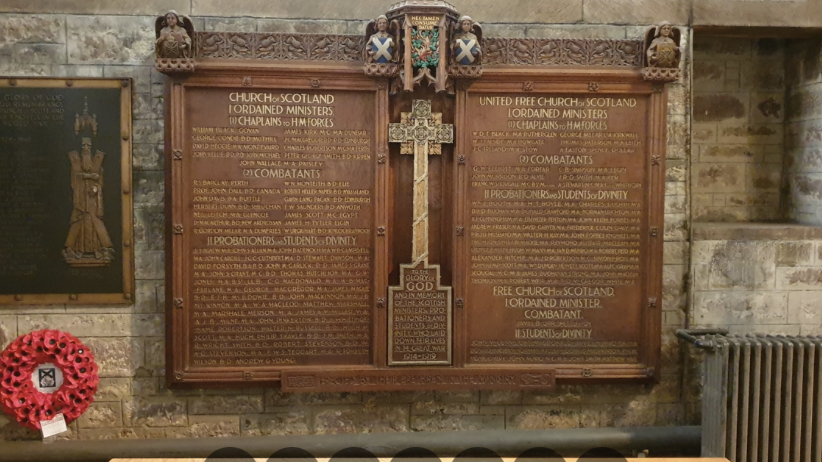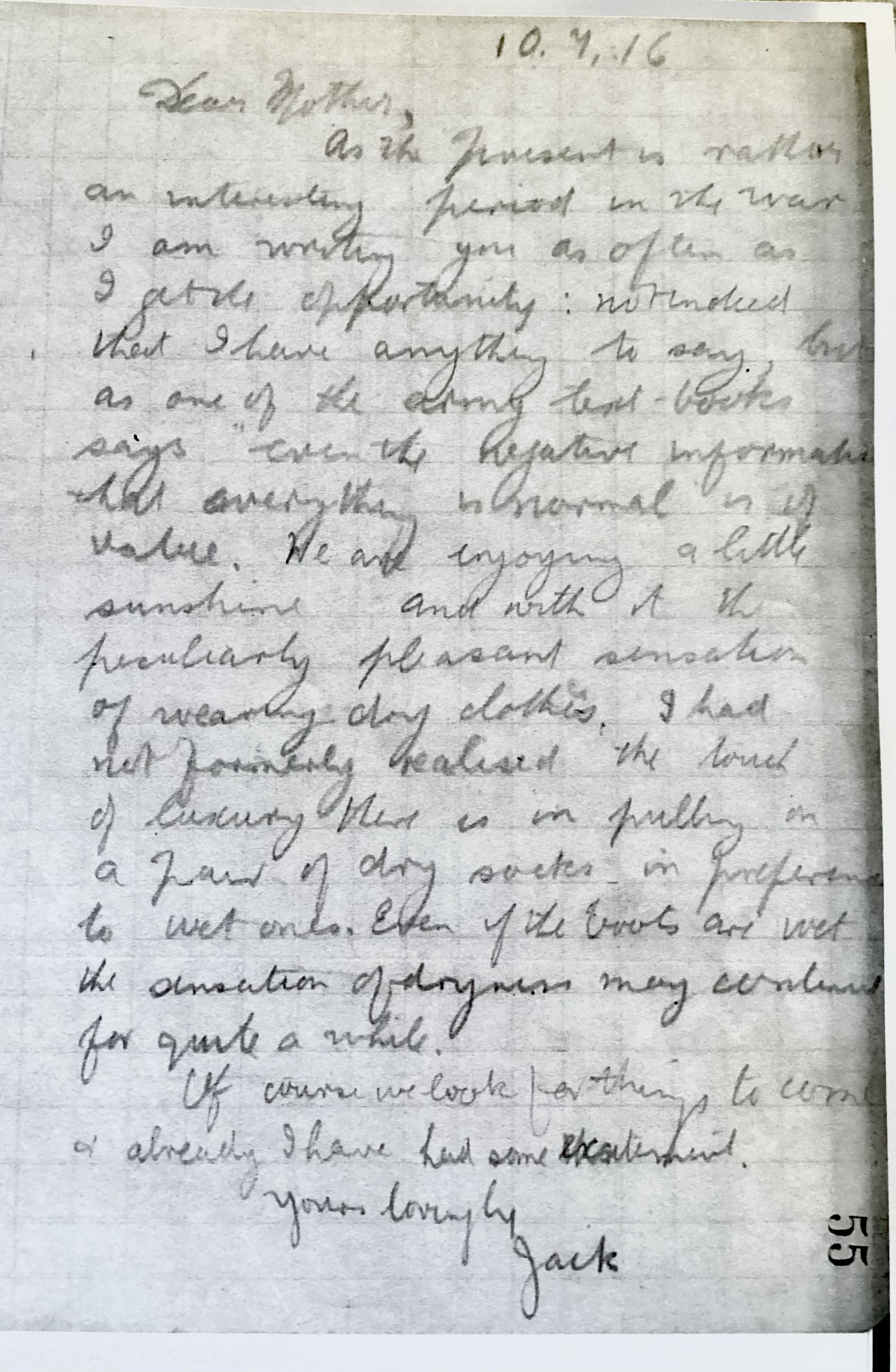
John (Jack) Kemp Scott (my great uncle) was born on December 1st 1891 at 389 Crown Street in the Hutchesontown area of Glasgow. His parents were Jane (Jeanie) Charleston Dunnett and Alexander, a compositor (print work - assembling movable letters and picture blocks into a frame for books or newspapers). They had married in 1877 and had six children - Jack’s three older brothers Thomas (b.1878) Andrew (b.1881) Alexander (b.1888), older sister Jennie (b.1885) and younger sister Isabella (b.1894).
In 1901, the family were still living in Hutchesontown but their father had died.
The 1911 census shows that some stage between these years, the family had moved to Strathblane where Jack’s brother Andrew had established a joinery business.
Jack remained a pupil at The High School of Glasgow until 1910 and at the age of 19 became an undergraduate at Glasgow University where he gained a Master of Arts degree in 1913.


He returned to the trenches on 17th June as the preliminary bombardment leading up to the first day of the Battle of the Somme began - the contents of his letters limited by the constraints of censorship and the need to reassure family at home. “There is a lot I would like to tell you but it is impossible. When I do see you, (that is if the Huns allow me) I will tell you all about these awful days.”
Jack’s last letter was written to his brother Tom, my grandfather, the contents seeming to reveal so much more of the divinity student than the battle ready soldier. “Last night a little rat tried to make friends with me. He snuggled in between me and the wall of the dug-out : unfortunately my sudden awakening disturbed him. A little weasel crawled onto my shoulder while I leaned on the side of the trench, but he would not wait even to apologise for the mistake. I often feel for the poor animals when they become so upset with the war”
Clearly dated 12th July, the letter seems to show some advancement in their position. “It is rather interesting to write a letter in a German dug-out, and indeed compared with our own efforts in that direction it is almost palatial. Of course we sleep six officers in a space they would have given to one. When this reaches you, the date of it or some near date will interest you and you will know that I was there.”
His obituary reads as follows : "He took part in the great advance of 1st July 1916, and led his platoon with distinction in the taking of the German first line. A fortnight later he met his death. He fell while gallantly leading his platoon during the great attack on the German second line, between Bazentin-le-Grand and Longueval”

Jack is known to have been buried at Flatiron Copse Cemetery. However, his grave is one of 36 subsequently lost during later fighting. Consequently, he is commemorated on a Special Memorial located alongside the boundary wall of the cemetery.
Given his background, one might expect a religious quotation. His family chose one not from standard Bible texts but part of what is known as the Apocrypha, namely Ecclesiasticus, chapter 44 verse 13: "THEIR GLORY SHALL NOT BE BLOTTED OUT".
This is the verse that precedes the quote chosen by Rudyard Kipling after the First World War to appear on war memorials throughout Britain: "THEIR NAME LIVETH FOREVER MORE".


Jack’s name (John) appears on the Glasgow University, Evening Times, High School of Glasgow and City of Glasgow Rolls of Honour. He is also listed on the Scottish Minister’s Probationers and Divinity Students Memorial Board in St.Giles Cathedral Edinburgh, unveiled and dedicated on 1st July 2021.
Some of these letters are undated but it appears that he was sent on a training course sometime in May 1916, billeted away from the trenches, location unknown but “almost out of hearing of the guns”.
He wrote “I wish I could describe to you how delightful it is to spend one’s first day in a billet as this is. I was in a real bed with blankets and sheets - after we had almost become accustomed to snatching an occasional hour’s sleep in a large size rabbit burrow. The men are as cheerful as larks although they know that tomorrow morning we are to begin a period of extra strenuous training“




He went on to study for the United Free Church Ministry and was travelling in Canada when war broke out. He came home to enlist in October 1914, initially joining the Royal Army Medical Corps.
In the Autumn of 1915, having undergone a brief training period, he was commissioned into the 1st Battalion Royal Scots Fusiliers. By early Spring 1916 and less than 2 years from the time his divinity studies had been interrupted, Jack was in France as part of the 9th (Scottish) Division.
Our family are fortunate to still have some of his letters, the first few written in ink but then, from the trenches, in pencil, on the thinnest of paper. “You will excuse me for writing on my message book. I have no writing pad here and cannot get one”

On 1st July he fought on the first day of the Somme and the days that followed. He had written to his mother - “I suppose you would be rather interested to know how I liked the trenches. I will not describe the experience however as it wasn’t really very pleasant. We were in a very bad part of the line and considering the situation we had comparatively few casualties. Our position was along a part made famous recently and the scene of more than one great action. I feel that it will see yet more activity as it is a place very difficult to hold. Our chief ‘bête noire’ was the trench mortar - a device of the devil I’m sure and not intended for civilised warfare“
On 10th July 1916 he wrote - “As the present is rather an interesting period of the war, I am writing you as often as I get the opportunity. Of course we look for things to come and already I have had some excitement.“



